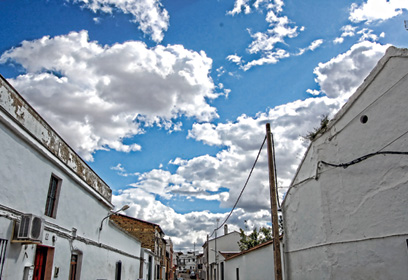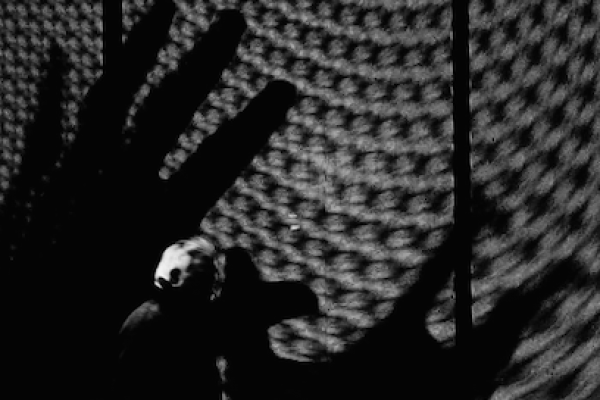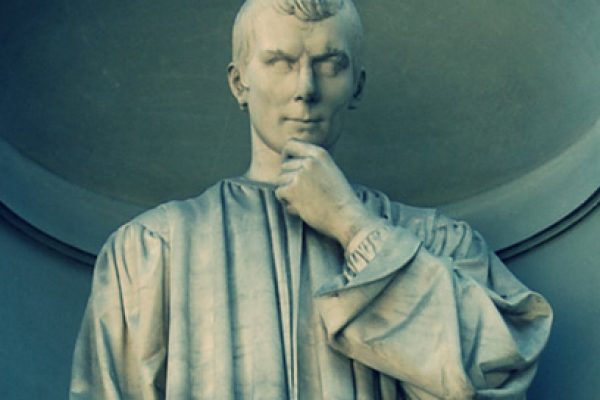The Village Against the World
Dan Hancox
Verso $26.95
Seek out images of the Spanish village of Marinaleda, and you’ll quickly see that the town considers itself utopia. Its crest proclaims Marinaleda “A Utopia towards Peace”; its folksy murals depict “the road to Utopia” and “the land of Utopia.” On the Web site for La Humar, its agricultural cooperative, members explain to visitors what utopia means.
Utopia: Know that the land of Los Humosos, found in the Genil lowlands, does not belong to anyone but to all the community and to the people who worked for years for a utopian society and for a better world—more just, egalitarian, peaceful, ethical, ecological, and humane. And we now have that. Know that when you consume our products you join in a great collective dream.
But here is the tricky thing about Utopia, Thomas More’s eponymous original published in 1516: it was a fiction. And it was not just any fiction: it was a kind of ur fiction built from many layers of fictions. It started with the author himself, who created a fictional author (also named Thomas More) who wrote a fictional letter to a real friend (Peter Giles) about a conversation that a made-up traveler (Raphael Hytholday) had with another real friend (Cardinal John Morton). This was followed by Hytholday’s fictional narration of his voyages with a real explorer (Amerigo Vespucci) to nonexistent places that Hytholday came to admire, including Utopia, a play on the Greek for both “no place” and “good place.”
Confused yet? If not, then perhaps you understand that the real More—the author of the story told by the fictional More about the fictional traveler who witnessed the fictional country of Utopia—may have meant the whole thing as an illustration of the limits of any government, even an ideal one. To the extent that the real More proposed anything concrete, it may have been nothing more than a series of riddles born from a society founded on thinly veiled absurdities: a river with no water (Anyder), a capital city (Amaurot) that is “unknown,” elected officials (syphogrants) who are “silly old men,” and a king (Ademus) whose name means “no people.” The good place, put simply, is no place.
This is not to deny the power of utopia (small “u”) as an idea. After all, the legacy of the book, Utopia, stems from the archetype of social idealism that it launched: the closed, self-governing, egalitarian community that guarantees the well-being of all. Who doesn’t want that? (Well, plenty of powerful people throughout history.) The most celebrated elements of Utopia are what the fictional country does not have: private property, capital punishment for petty thievery, an official religion. And Utopia sustains certain customs—strange when the book was written—that have become the cornerstone of liberal democracies, chief among them universal education and some degree of gender parity. So, understandably, Utopia, the book, became associated with similar communal dreams.
Marinaleda appears to possess all the elements of a radical dream come true.
Nonetheless, Utopia, the country, also maintains practices that were commonplace in the early Renaissance and that modern readers find puzzling, if not downright anathema, such as the lifetime enslavement of anyone found derelict in their work duties. Utopia also mandates family size by removing “excess individuals” from any family that numbers more than sixteen and placing them with “undersized” families. And don’t forget the limits on mobility: any would-be travelers need passports and the medieval equivalent of visas in order to move among Utopia’s cities. Presumably life is so good everywhere in Utopia, and all your needs so completely met in your hometown, that you never need to travel. And since travel would inevitably get in the way of your work obligations—granted, only six hours per day—you really shouldn’t do it, anyway. Hence the harsh punishment for wanderlust: again, perpetual enslavement.
Indeed, Utopia regiments social life so completely that one can read its strict prohibitions on liberty as either the product of a tyrannical mind (that of its founding conqueror, Utopus) or a deadpan joke. All towns and cities in Utopia are the same size and have the same rectilinear streets, alleyways, houses, and gardens. Residents of every town dine in communal halls at tables divided by age and gender and happily move every ten years when assigned new residences by lottery. Towns neither grow nor shrink, as no town would ever want to do so.
Such uniformity would yield stasis, indicating not only that Utopia, no matter how good, is not any real place, but also that it is a historical impossibility. Real places have histories: they change in size or composition, or in some other way. While the real Thomas More surely understood that populations, economies, and built environments evolve and transform, his fictional counterpart gives no indication of what either the real or imagined More made of this aspect of Utopia’s nonsense.
Regardless of whether the real More intended to inspire the pursuit of his fiction in reality, people have tried many times self-consciously to make utopias. And they have all failed.
The utopias that styled themselves as radically different and separate from their surrounding societies often found that they could not maintain their distinctiveness and eventually merged back into the worlds that they had once shunned. The state of Utah, for example. Or—as in the many nineteenth-century utopian socialist communities founded or inspired by Charles Fourier, Robert Owen, and the Comte de Saint Simon—these societies found it impossible to perpetuate their forms of difference for long. Utopian socialist societies echoed many of the fictional Utopia’s elements: autonomy, highly regulated social life, collective ownership of property, and so on. And they all, just like the original with which they became indelibly associated, promoted wacky ideas. Fourier, for example, predicted that the oceans would one day give up their salt and replace it with the taste of lemonade.
Nineteenth-century utopian socialists failed to understand the impossibility of their dreams because they mistook a fiction for a blueprint. In this sense they resembled the fictional citizens of More’s Utopia, who also didn’t realize that they were populating a fiction. More-the-author never let his fictional Utopians discover the fourth wall of the stage on which their drama played out. So they took themselves seriously, according to their fictional narrator. In this they were like an entire country of hapless Truman Burbanks, of The Truman Show (1998), unaware that the world in which they lived was produced merely for the viewing pleasure of an audience who remained ever invisible to them.
So what to make of tiny Marinaleda and its utopian insistence? In 2004 the British journalist Dan Hancox found himself among Marinaleda’s distant observers when he learned about the village in an Andalusian tourist publication. Enchanted by Marinaleda’s story, he finally visited in January 2012. Over the next year, Hancox returned at least twice, and from these encounters wrote The Village Against the World to tell us what he learned about Spain’s “little Communist utopia.”
Hancox has a crush on Marinaleda. That much is obvious in his flattering review of the village’s daily life and its late twentieth-century history. His details echo other reports of Marinaleda you might find in The Guardian or El País or the New York Times. They reveal why the community appeals so deeply to leftist readers, neo-Sandalista tourists, and other consumers of utopia’s egalitarian and communal elixirs. Marinaleda appears to possess all the elements of a radical dream come true: a town governed by citizens deliberating together in inclusive public fora, an agricultural cooperative that generates not profit but meaningful employment for the workers bonded to it, and free housing for anyone willing to invest only sweat-equity. There are also, for good measure, images of Ché (sincere, not spoofs), revolutionary slogans and the other iconography of rebellion splashed around the town’s white walls, and a charismatic mayor who sports a keffiyeh in the Palestinian style.
A thumbnail summary of Marinaleda’s story begins in the waning years of the Franco dictatorship, when strikes crippled much of Spain, though Hancox locates Marinaleda’s origins in the deeper history of Andalusian rebellion, anarchy, and autonomy. Into this political window stepped a young history teacher, Juan Manuel Sánchez Gordillo, who, in 1979, won Marinaleda’s first mayoral election. He has held the office ever since. But how could he govern a town of landless migrant peasants who spent at least part of the year peseta-less and hungry and the other part working fields in distant lands? These conditions didn’t offer much for either a politician—no matter his agenda—or his electorate. So Sánchez Gordillo staged a series of headline-grabbing crusades, starting in 1980 with a nine-day hunger strike (“to end hunger”) undertaken by 700 men, women, and children.
Andalusia’s autonomous government, seemingly shamed by Sánchez Gordillo and the moral righteousness of Marinaleda’s petitioners, shoveled hundreds of millions of pesetas at the village to dispel the strike. For how long and in what manner these subsidies were offered, Hancox does not say. But by the living standards of the time—200 pesetas per family per day, according to Hancox—one wonders what that avalanche of money paid for.
Marinaleda made its demands precisely when the government had something to offer.
Whatever it paid for, it did not provide the villagers local employment and economic opportunities. So in 1991 they occupied the estate of a nearby absentee aristocrat and demanded land. They eventually secured 1,200 expropriated hectares, on which they established their agricultural cooperative, La Humar. They manage the cooperative, in Hancox’s somewhat formulaic account, as they do the village itself: through assemblies. Hancox offers no details on the mechanics of these sessions, probably because he never witnessed one and was left only with reports that the assemblies have always ended in amicable agreements.
To this canned history of Marinaleda Hancox adds fresh descriptions of the sensual appeal of the village, including the pleasure he took in a meal with cooperative members during the olive harvest. Hancox has a knack for eliciting flavors, fragrances, and textures; I found myself salivating over a delicious-sounding but simple Andalusian peasant breakfast—“half moons” of fresh baked bread, crusty on the outside, fluffy on the inside, into which you dig your thumbs to make a reservoir for olive oil, ham, and cheese. If the flattering portrait of the communist town and its revolutionary mayor don’t prompt leftist readers to book a flight, then Chapter 5, “Bread and Roses,” will surely draw them with its descriptions of rich foods and quaint social customs.
But while your appetite for colorful travelogue will be satisfied, you might find yourself still hungry for the dirt on the town. Hancox doesn’t offer much. Fearful that he will lose access to key players, he denies having read an anthropology student’s mid-1990s study of Marinaleda, which the village leadership disdains. “I feigned ignorance of [the anthropologist], not wanting to associate myself with another suspicious outsider who asked a lot of questions—and chose the wrong answers.” It is understandable that Hancox sought to protect his relationships with the villagers, but he could at least have discussed the story with readers. What had the anthropologist dug up, and—importantly—why did it ruffle feathers?
And surely this village harbors some dissidents, doesn’t it? Sort of. At the time of Hancox’s visits there were two local councilmen from the “opposition” socialist party. Hancox conducted an oddly secretive meeting with one of them, on the edge of town. It was “like we were in hiding,” he writes. This encounter, however, yields nothing substantive about village politics and mostly shows instead the councilman’s eccentricities. But Hancox also seemed, in this instance, afraid. Of what?
It is possible that Hancox feared not of, but for—for the fiction that he had built in his head over eight years. What you get in his book feels preordained: Hancox’s scant visits to Marinaleda confirm what he already thought of the place. I found his efforts at investigative reporting particularly desultory. He gave up looking for documents to corroborate or challenge Marinaleda’s orthodox version of itself as soon as he learned that the town keeps no records. But is there really nothing on file? It is hard to imagine that a town that governs itself through meetings keeps no records of what it collectively decides. This is the Iberian Peninsula after all, where the Inquisition—a force for its own perverse sort of utopia—invented the bureaucratic template upon which modern Europe was built.
Consider what Marinaleda’s allegedly nonexistent records might reveal. They might reveal internal tensions, if not outright dissension. Where there are public meetings and collective management, there must be friction. Marinaleda’s residents may indeed work hard to eliminate or blunt social and economic hierarchies. But that takes work. As with any social norm, consensus must be continually inscribed and inculcated. Hancox does not appear to have asked and thus cannot explain how the Marinaleda utopians keep the inherent differences of being human from bubbling up into social divisions, stratification, or just garden variety animosity between neighbors.
When Hancox gets blocked on a routine search for town records, he decides the important stuff about Marinaleda’s past resides in the memories of the people who lived it: retired men—and only men, it turns out—who spend the day playing cards and drinking coffee. “The history is with them, passed down the generations through storytelling and the reproduction of the practice of struggle, rather than upstairs in the library.” It is therefore no surprise that Hancox seems persuaded the villagers are really sui generis, harboring a “subjectivity . . . self-consciously different to that in the world outside.”
Hancox might have been bold enough to query this exceptionalism rather than simply accept villagers’ assertion of their distinctiveness. Maybe Marinaleda is in some significant ways unique, but many of the town’s most distinctive features can be found elsewhere in Spain, sometimes in even more radical forms. For example, theirs is hardly the country’s only worker-owned cooperative. The Basque region boasts the world-famous Mondragon Corporation, which predates La Humar by some forty years and is enormous and enormously successful by comparison. And by Spanish standards, Marinaleda’s radicalism is tame. Its members are neither separatists nor violent, as are well-known political groups in other regions.
Bending Marinaleda’s experience around the larger arc of late twentieth-century Spanish history could have yielded both a more nuanced story of the village and a more detailed picture of the context in which the village has conducted its political and economic business. A journalist adopting such an approach might, for example, have probed how Marinaleda was not so much an autonomous exception to the Spanish federal government but one of its particularly successful clients. Recall that Marinaleda arose as a self-governed communist village at a time when, nationally, Spain had turned itself into a socialist democracy.
Hancox reports that some critics accuse La Humar of running itself on government subsidies without ever achieving economic self-sufficiency. But he suggests that these allegations are unproven. It hardly seems necessary to protect the collective from such charges, though. La Humar’s dependency was routine during at least a portion of its existence, thanks in part to state practices dating to the Franco regime, which, according to economic historian Sebastián Royo, guaranteed workers employment for life as compensation for restrictions on political freedom.
Marinaleda achieved its initial successes just as Spain began an unprecedented investment in what became its version of the welfare state, a point that Hancox overlooks. Spain’s public spending had gone from an anemic 20 percent of GDP in 1960 to nearly twice that by 1980. This means that Marinaleda made its demands for resources precisely when the government, for the first time, had something to offer in response. In the years of Marinaleda’s experiment, Spain became the European Union’s largest net beneficiary. According to historian Mary Vincent, all Spanish regions reaped the proceeds of this one-way river of money. Maybe all Marinaleda had to do was figure out how to ask for it.
Finally, Hancox takes at face value cooperative workers’ claims that they opted not to turn the expropriated farmland at the core of their cooperative into small private holdings, preferring instead to undertake collective cultivation. However, according to other sources, the cooperative’s land in fact belongs to the Andalusian regional government, which leases it to the cooperative. So the townspeople never could own the land outright even if they wanted to, nor could the workers in any of the other state-supported cooperatives that gained access to eleven expropriated estates during in the late 1980s. That the cooperative manages its land collectively may therefore be a product of its tenancy agreement with the Andalusian government rather than an expression of its communal principles. Here is an area where looking at the village’s allegedly nonexistent records could have yielded something interesting.
There is, if we return to the fiction of utopia, another way to understand the wordplay that got this whole business of dreaming up an ideal community going. Maybe Thomas More meant not that the ideal community is “no place” but, instead, all places. And the lesson we should take from a study of utopia is thus not to look for a universal instance but to strive to imagine many possible utopias; we can’t use the experience of one to design any other. Rather, the best we can hope for is the best possible community for particular people in particular places at particular times.
In this understanding of Utopia (both the book and the fictional country), the ideal community becomes the real community for those people who see in reality the ideal. But, we should remember, the real community does not the ideal community for everyone, everywhere, make. I think the rules of Utopia the country rather oppressive. Who am I to judge? I am not of Utopia.
This understanding allows us to better appreciate two things that would otherwise limit the utility of Hancox’s account. First, the people of Marinaleda appear to enjoy their lives there; the town’s ethos speaks to its suitability for its residents. And second, why and how they make it work for themselves is none of our business because their methods are not the source of anyone’s bliss but their own. So we shouldn’t ask to see their records any more than anyone should ask to see my checkbook just because I claim that I really like my family and that it really works for me. We might look at their records to investigate wrongdoing, to determine whether the apparent comity of members is in fact coerced, but not to find the master key to unlock community happiness.
More generated the idea of Utopia writ large and sent generations of seekers, both fictional and real, on lifelong odysseys in search of the ideal community, either to witness it or to make it. Two hundred and fifty years later, Voltaire’s (fictional) Candide did just that. But Candide’s journeys drove him home, where he recommended that, rather than look for the ideal society, we should seek, more modestly, to nurture the good society in the gardens of our own making. We can’t make an Andalusian olive grove and its cooperative work anywhere outside of Andalusia. But we can—anywhere—nurture the native seeds of our own good societies, helping them to germinate and propagate in the gardens of our existing world.
Photograph: Ana Vigueras








